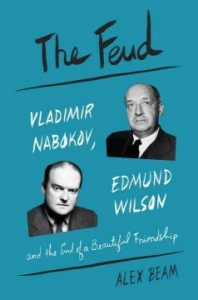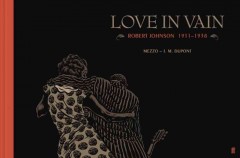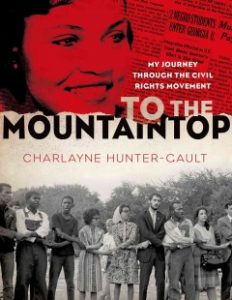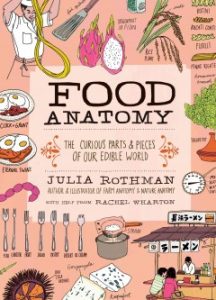And welcome, beloved patrons, to our final Five Book Friday of 2016! We hope that the Free for All, and the Library have provided you with a safe, comforting, and inspiring space (both virtually and physically) during this troublesome year, and we look forward to making our collective 2017 a bright and fulfilling one!
I, personally, am not a New Year’s type of person. As a little kid, for some weird reason, countdowns in general sent me into a panic, and I’ve never really recovered fully. That shouldn’t stop you, however, from ushering 2016 into the history books with some sort of grand gesture or traditional celebration. In fact, here are a few ideas from around the world to get your New Year’s Celebrations off to a good start:
- “Ring Out The Old, Ring In The New,”
In Sweden, Alfred Tennyson’s old poem “In Memoriam” (More generally known as ‘Ring Out, Wild Bells’) has been read out at Stockholm outdoor museum Skansen since the mid-1890s, usually by a famous actor. You can have your own reading by following this link here. - Tossing Crockery
In Denmark it is a good sign to find your door heaped with a pile of broken dishes at New Years. Old dishes are saved year around to throw them at the homes where their friends live on New Years Eve as a sign of brotherhood and friendship. Those houses with the largest pile of broken dishes outside their doors are the people who have the most friends. - Eat Your Lentils
In Brazil, lentils are considered a source of good luck, so most dishes are served with them. If you’re not really into lentils, Austrians celebrate with green peppermint ice cream. - Ring Out, Wild Bells
In Japan, bells are rung 108 times in alignment with the Buddhist belief that this brings cleanness. It’s also considered good to be smiling going into the New Year, as it sets the tone and brings good luck with the coming year. - Visit the Library
This is a tradition I just invented, but if you wanted to start your New Years by paying us a visit on January 2, 2017, when we re-open, you would be most welcome, and wished a very happy new year. And, to help you look forward to your adventure, here are some of the books that you will find waiting for you!

 The Man With the Poison Gun: In the fall of 1961, KGB assassin Bogdan Stashinsky defected to West Germany. After spilling his secrets to the CIA, Stashinsky was put on trial in what would be the most publicized assassination case of the entire Cold War, and would have lasting effects within the KGB and its leadership. Stashinsky’s testimony, which openly implicated Kremlin rulers in political assassinations outside of the borders of the USSR, upended international politics, and confirmed some of the more outlandish Cold War fiction plots. It would go on to inspire plenty more, as well, including Ian Fleming’s last James Bond novel, The Man with the Golden Gun. Serhii Plokhy’s expertly researched and marvelously well-told history reads like one of Bond’s adventures, revealing the absurdities and the horrible truths of Cold War espionage, and the lengths that both the US and the USSR were willing to go to keep their secrets safe. Kirkus gave this book a rave review, saying “With gusto and verve, Plokhy details Stashinsky’s intelligence work…. A thrilling, well-researched tale of espionage that has all the spycraft hallmarks of a blockbuster movie.”
The Man With the Poison Gun: In the fall of 1961, KGB assassin Bogdan Stashinsky defected to West Germany. After spilling his secrets to the CIA, Stashinsky was put on trial in what would be the most publicized assassination case of the entire Cold War, and would have lasting effects within the KGB and its leadership. Stashinsky’s testimony, which openly implicated Kremlin rulers in political assassinations outside of the borders of the USSR, upended international politics, and confirmed some of the more outlandish Cold War fiction plots. It would go on to inspire plenty more, as well, including Ian Fleming’s last James Bond novel, The Man with the Golden Gun. Serhii Plokhy’s expertly researched and marvelously well-told history reads like one of Bond’s adventures, revealing the absurdities and the horrible truths of Cold War espionage, and the lengths that both the US and the USSR were willing to go to keep their secrets safe. Kirkus gave this book a rave review, saying “With gusto and verve, Plokhy details Stashinsky’s intelligence work…. A thrilling, well-researched tale of espionage that has all the spycraft hallmarks of a blockbuster movie.”
 The Feud: Vladimir Nabokov, Edmund Wilson, and the End of a Beautiful Friendship: The world does not lack for books on the infamous and furious feud that flared up between Russian-American novelist Vladimir Nabokov and literary critic Edmund Wilson–their letters have been published, along with several histories. But Boston Globe writer Alex Beam loves his subject so much, and brings such linguistic insight to his work that this book is a welcome addition to this rather bizarre story. Wilson was Nabokov’s first patron, and a true friend when Nabokov and his wife were newly-arrived immigrants, struggling to make ends meet. He introduced them to the right people, supported Nabokov’s work, and praised his intellect. In return, Nabokov provided Wilson years of correspondence, intellectual discourse, and support for his own work. But with the publication of Lolita, and Nabokov’s translation of Eugene Onegin, which Wilson savaged in reviews, and their once great friendship collapsed into highly intelligent, and bitterly savage wordsmithery. Beam brings his own passion for literature and keen journalistic insight to this story, making it into something very human, very funny, and wonderfully engaging. The Boston Globe, unsurprisingly, gave this book a rave (but wise and thoughtful) review, noting that Beam “has a keen sense of the absurd and is mischievous but not malicious in exposing the foibles of these frenemies. He also, while he’s at it, has some Nabokovian fun as he laces his narrative with wordplay and faux-scholarly flourishes…his book mostly leaves you asking yourself how prideful and pig headed even the smartest men can be. If there’s a broader application to The Feud, it stems from that question, which doesn’t bode well for any of us.”
The Feud: Vladimir Nabokov, Edmund Wilson, and the End of a Beautiful Friendship: The world does not lack for books on the infamous and furious feud that flared up between Russian-American novelist Vladimir Nabokov and literary critic Edmund Wilson–their letters have been published, along with several histories. But Boston Globe writer Alex Beam loves his subject so much, and brings such linguistic insight to his work that this book is a welcome addition to this rather bizarre story. Wilson was Nabokov’s first patron, and a true friend when Nabokov and his wife were newly-arrived immigrants, struggling to make ends meet. He introduced them to the right people, supported Nabokov’s work, and praised his intellect. In return, Nabokov provided Wilson years of correspondence, intellectual discourse, and support for his own work. But with the publication of Lolita, and Nabokov’s translation of Eugene Onegin, which Wilson savaged in reviews, and their once great friendship collapsed into highly intelligent, and bitterly savage wordsmithery. Beam brings his own passion for literature and keen journalistic insight to this story, making it into something very human, very funny, and wonderfully engaging. The Boston Globe, unsurprisingly, gave this book a rave (but wise and thoughtful) review, noting that Beam “has a keen sense of the absurd and is mischievous but not malicious in exposing the foibles of these frenemies. He also, while he’s at it, has some Nabokovian fun as he laces his narrative with wordplay and faux-scholarly flourishes…his book mostly leaves you asking yourself how prideful and pig headed even the smartest men can be. If there’s a broader application to The Feud, it stems from that question, which doesn’t bode well for any of us.”
 Love In Vain: Robert Johnson 1911-1938, The Graphic Novel: Robert Johnson wrote some of the most enduring and formative songs of the original blues era, songs that would go on to help shape the birth of rock ‘n’ roll in the 1960s. Despite his death at the age of 27, and his somewhat late start on the road to fame–Johnson started as a traveling musician in the American North, but really only gained fame after he returned to the deep South, Johnson’s career was incredibly prolific, and an enormous collection of myths emerged about his talent and his productivity (perhaps the most famous of which is that he sold his soul to the Devil to be able to play the guitar). In this hauntingly beautiful and well-researched graphic novel, J.M. DuPont and illustrator Mezzo bring Johnson’s career and very real, flawed, and fascinating life to light in a book about which Publisher’s Weekly intriguingly wrote: “The basics of Johnson’s brief life are detailed in a dark and almost succulent level of prewar woodcut-style detail by artist Mezzo. Dupont’s intimate and prying narrative tracks Johnson’s life closely from his dirt-poor Mississippi youth through his later vagabond years as a womanizing roamer and guitar slinger…The key question of the devil’s involvement is left for readers to decide.”
Love In Vain: Robert Johnson 1911-1938, The Graphic Novel: Robert Johnson wrote some of the most enduring and formative songs of the original blues era, songs that would go on to help shape the birth of rock ‘n’ roll in the 1960s. Despite his death at the age of 27, and his somewhat late start on the road to fame–Johnson started as a traveling musician in the American North, but really only gained fame after he returned to the deep South, Johnson’s career was incredibly prolific, and an enormous collection of myths emerged about his talent and his productivity (perhaps the most famous of which is that he sold his soul to the Devil to be able to play the guitar). In this hauntingly beautiful and well-researched graphic novel, J.M. DuPont and illustrator Mezzo bring Johnson’s career and very real, flawed, and fascinating life to light in a book about which Publisher’s Weekly intriguingly wrote: “The basics of Johnson’s brief life are detailed in a dark and almost succulent level of prewar woodcut-style detail by artist Mezzo. Dupont’s intimate and prying narrative tracks Johnson’s life closely from his dirt-poor Mississippi youth through his later vagabond years as a womanizing roamer and guitar slinger…The key question of the devil’s involvement is left for readers to decide.”
 To The Mountaintop : My Journey Through The Civil Rights Movement: On January 20, 2009, 1.8 million people crowded the grounds of the Capitol to witness the inauguration of Barack Obama. Among the masses was Charlayne Hunter-Gault, who had flown from South Africa to witness an event that was for many the culmination of the generations-long Civil Rights Movement in the United States. Hunter-Gault uses this event to reflect on her own involvement in the Civil Rights Movement, from her youth, where she was one of two black students who forced the University of Georgia to integrate, and through some of the most pivotal events of the last forty years. Her narrative is striking for its historical importance, and deeply effective as a personal journey, and the addition of a wealth of photographs further enhances this journey. Booklist gave this title a starred review, calling it a “powerful complement to the civil rights canon draws a compelling line from the beginnings of the movement to the Voting Rights Act of 1965, which opened the door to the long corridor that led to the White House in January 2009.”
To The Mountaintop : My Journey Through The Civil Rights Movement: On January 20, 2009, 1.8 million people crowded the grounds of the Capitol to witness the inauguration of Barack Obama. Among the masses was Charlayne Hunter-Gault, who had flown from South Africa to witness an event that was for many the culmination of the generations-long Civil Rights Movement in the United States. Hunter-Gault uses this event to reflect on her own involvement in the Civil Rights Movement, from her youth, where she was one of two black students who forced the University of Georgia to integrate, and through some of the most pivotal events of the last forty years. Her narrative is striking for its historical importance, and deeply effective as a personal journey, and the addition of a wealth of photographs further enhances this journey. Booklist gave this title a starred review, calling it a “powerful complement to the civil rights canon draws a compelling line from the beginnings of the movement to the Voting Rights Act of 1965, which opened the door to the long corridor that led to the White House in January 2009.”
 Food Anatomy : The Curious Parts & Pieces of Our Edible World: Julia Rothman’s Anatomy series provides irresistibly fun and fascinating journeys through bits of pieces of everyday life, focusing on those tiny details we often miss–texture, color, cultural significance–to bring the world around us to life in a whole new way. This newest addition to the series is all about food (hooray!), from short-order cook’s lingo to the countless ways potatoes are fried and consumed around the world (and the myriad sauces into which they are dunked), to how and why the croissant was invented. This is a book for foodies, bakers, cooks, and the curious alike, and her quick-wit and delight in her subject make this book a treat to read. Just…bring a snack with you! Food Republic ate this book up (hardy har har), saying in their review, “It’s a beautiful thing when food and art come together. Julia Rothman is definitely familiar with this notion. In the third book of her Anatomy series, Rothman enlists the help of James Beard Award-winning journalist Rachel Wharton and illustrates nearly everything there is to know about food. Not only is Food Anatomy easy on the eyes; it’s also educational. Within its pages readers can find the percentage of butterfat in different dairy products, how popcorn pops, how to make tofu, short order lingo for egg orders and more.”
Food Anatomy : The Curious Parts & Pieces of Our Edible World: Julia Rothman’s Anatomy series provides irresistibly fun and fascinating journeys through bits of pieces of everyday life, focusing on those tiny details we often miss–texture, color, cultural significance–to bring the world around us to life in a whole new way. This newest addition to the series is all about food (hooray!), from short-order cook’s lingo to the countless ways potatoes are fried and consumed around the world (and the myriad sauces into which they are dunked), to how and why the croissant was invented. This is a book for foodies, bakers, cooks, and the curious alike, and her quick-wit and delight in her subject make this book a treat to read. Just…bring a snack with you! Food Republic ate this book up (hardy har har), saying in their review, “It’s a beautiful thing when food and art come together. Julia Rothman is definitely familiar with this notion. In the third book of her Anatomy series, Rothman enlists the help of James Beard Award-winning journalist Rachel Wharton and illustrates nearly everything there is to know about food. Not only is Food Anatomy easy on the eyes; it’s also educational. Within its pages readers can find the percentage of butterfat in different dairy products, how popcorn pops, how to make tofu, short order lingo for egg orders and more.”
Until next year, beloved patrons–happy reading!
